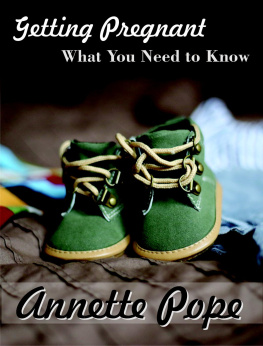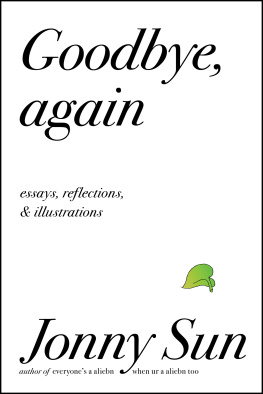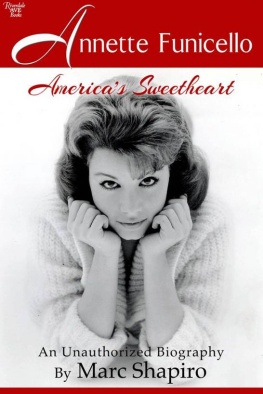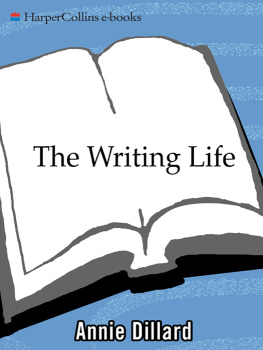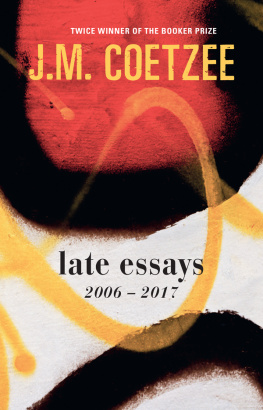Published by
The University of Alberta Press
Ring House 2
Edmonton, Alberta, Canada T6G 2E1
A.S. Woudstra Copyright 2007
National Library of Canada Cataloguing in Publication
Woudstra, A. S. (Annette Schouten), 1975-
The green heart of the tree : essays and notes on a time in Africa /
A.S. Woudstra.
(cu R Rents)
Includes index.
ISBN-13: 978-0-88864-476-3
1. Woudstra, A. S. (Annette Schouten), 1975 Travel--Africa. 2. Africa
Description and travel. I. Title. II. Series: Currents (Edmonton, Alta.)
PS8645.O92G74 2007 916.7210442 C2006-906858-5
Some of essays in this volume have appeared elsewhere: Other Voices (Swallow the Black Seeds); Queens Quarterly (A Necessary Silence and Fish and Fetish); Brick, A Literary Journal (A Deepening Circle and The Green Heart of the Tree).
First edition, first printing, 2007
All rights reserved.
Printed and bound in Canada by Marquis Book Printing Inc., Montmagny, Quebec.
A volume in (cu R Rents), a Canadian literature series.
Jonathan Hart, series editor
No part of this publication may be produced, stored in a retrieval system, or transmitted in any forms or by any means, electronic, mechanical, photocopying, recording, or otherwise, without the prior written consent of the copyright owner or a licence from The Canadian Copyright Licensing Agency (Access Copyright). For an Access Copyright license, visit www.accesscopyright.ca or call toll free: 1-800-893-5777.
The University of Alberta Press is committed to protecting our natural environment. As part of our efforts, this book is printed on Enviro Paper: it contains 100% post-consumer recycled fibres and is acid- and chlorine-free.
The University of Alberta Press gratefully acknowledges the support received for its publishing program from The Canada Council for the Arts. The University of Alberta Press also gratefully acknowledges the financial support of the Government of Canada through the Book Publishing Industry Development Program (BPIDP) and from the Alberta Foundation for the Arts for its publishing activities.
for Doug and Susanna
and forShawna
Foreword
In the first days of 2002 I left Canada with my husband and three-year-old daughter for a new, indefinite home in Africa. We had done a lot of travelling before this, but had never visited the African continent. And this was not a trip: it was emigration, a true voyage out. Our first set of tickets took us to Kigali, Rwanda, where for several months we lived in the garden guesthouse of a Belgian architect and his Rwandese wife. There we worked on our French language skills and my husband, Doug, worked at and studied a community health-care project that was similar to the one he would be running at our final destination of the central African country of Gabon.
Before we left we sold our house and nearly everything in it. We packed and sent four Rubbermaid containers on a ship to Libreville, the port and capital city of Gabon. One container was taken up almost entirely by our daughter Susannas little red bike. Another held things like a printer and inks and paper. Toys and art supplies and linens took up another box, but books filled the fourth container and every other available space. Many came carry-on as well, and each trip back to Libreville from Canada brought more. Books have always been, for me, very necessary (if very weighty) companions. My husband has very generously helped to haul them around many countries for me, many times.
The most important, the irreplaceable, and immediately essential books have had to come carry-on, and I think that one of these was, from the very beginning, Tim Lilburns Living in the World as if it were Home, a collection of essays. I mention it because, in sitting down to write this foreword, I realize how much the reading of (and maybe believing in) that book informed the writing of this one. It was Lilburns book that helped bring me over the bridge from poetry to the essays Ive written here. More importantly though, he taught me (as Annie Dillard and Simone Weil in their own ways have also done) that to continually be at wonder in this world, to be asking how to be here was an acceptable, and maybe even an important, occupation. In his description of the contemplative stance, I found a kind of home to live in and write from while I was very much not-at-home.
How we came to be not-at-home in the middle of the central African rainforest went something like this: My husband and I simply wanted to go. We wanted to work and learn new things in new places, we felt there might be something we could do or give, and we were tired of the getting-game. The North American habit of endless consumption had becomeit seemed unavoidablyour own. We had lived here all of our lives. As soon as a rather obscure opportunity to leave came our way, we took it.
My husband, Doug, was a physical therapist at the time, and he was hired by a large European non-governmental organization (NGO) to be the director of a community-based rehabilitation project in Libreville. During the years we lived there, he trained the local staff, set up important connections to other philanthropic health-care providers in the country, and pressured the government to establish health-care policies that would give the poor better access to health-care services. He and his staff solved problems related to day-to-day health and rehabilitation in the poorest neighbourhoods of the city and surrounding villages, and worked to educate the community to respond to the needs of and advocate for its own members. We left when the local staff was ready and able to continue the work of the project on their own, which they continue to do today.


